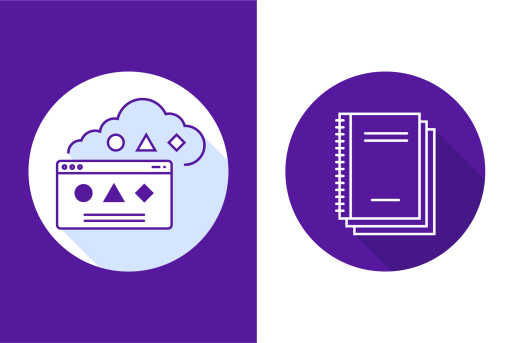The Art of Automated Content: Harmonizing Technology and Creativity in the Digital Age
In today's electronic age, where technology consistently advances and creative thinking remains a vital aspect of content creation, finding the fragile balance in between the 2 ends up being an art type by itself. Automated content has gained substantial grip, promising effectiveness and efficiency, but it begs the question of whether modern technology can really replace human creativity. As we embark on this conversation, we will certainly check out the rise of computerized material, the function of creativity in this electronic landscape, and the difficulties that emerge when trying to strike an unified balance. Join us as we decipher the intricacies and implications of the art of computerized material, and visualize the future of web content development.
The Surge of Automated Content
The increase of computerized web content has actually revolutionized the method information is produced and shared, transforming sectors and challenging typical concepts of creativity and human participation. With the advancements in innovation and equipment understanding algorithms, automated web content generation has ended up being significantly advanced, making it possible for the production of large quantities of content at extraordinary rates.
One of the vital motorists behind the surge of automated material is the requirement for efficiency and scalability in content production. Automation permits businesses to simplify their material production procedures, lowering prices and increasing performance. By leveraging algorithms and data-driven insights, automated systems can produce customized and targeted material that resonates with particular target markets.
In addition, automated content has also democratized access to information and understanding. It has actually allowed people and organizations to conveniently share and develop web content, damaging down obstacles to entrance and equipping individuals to express their imagination and ideas. This has led to a proliferation of user-generated web content and a shift in power from traditional media electrical outlets to social networks and on the internet platforms.
However, the surge of automatic material does increase concerns concerning the function of human creative thinking and proficiency (SEO Outsourcing). While automation can efficiently create material, it does not have the nuanced understanding, psychological intelligence, and imaginative style that people offer the table. Therefore, striking a balance in between innovation and creative thinking is vital to make certain that automated material remains informative, engaging, and relevant

Accepting Technical Advancements
As markets adjust to the increase of automatic material, embracing technical improvements ends up being critical for maintaining an one-upmanship in the ever-evolving landscape of content creation and circulation. With the rapid developments in modern technology, companies and material designers require to remain ahead of the curve to fulfill the demands of today's electronic consumers.
One significant technological advancement that should be accepted is synthetic knowledge (AI) AI-powered devices can evaluate substantial amounts of information, recognize patterns, and produce insights to improve the web content development process. These devices can assist automate recurring tasks such as information collection, analysis, and material circulation, allowing content designers to concentrate on even more strategic and creative elements of their job.
One more technical improvement that needs to not be neglected is equipment discovering. Device understanding algorithms can evaluate individual behavior, choices, and patterns to personalize material recommendations. By leveraging maker learning, businesses can supply tailored material experiences to their audience, increasing interaction and client satisfaction.
Furthermore, the Web of Points (IoT) offers chances for content makers to link with customers on an extra customized degree. IoT gadgets can accumulate data on individual communications, choices, and practices, enabling material creators to deliver personalized material in real-time.

The Function of Creative Thinking in Automated Content
Creativity plays a crucial role in the advancement and success of automated material, driving development and ensuring engaging and special experiences for digital customers. While innovation supplies the framework and devices for automation, it is creativity that breathes life right into the web content, making it relatable, memorable, and impactful.
In the digital age, where consumers are pounded with details and material, it is coming to be significantly testing to capture their focus and stand out from the crowd. This is where creativity ends up being crucial. Automated content that lacks creativity runs the danger of being common, boring, and easily forgotten. On the other hand, content that is infused with creative components can astound target markets, stimulate emotions, and leave a long lasting impression.
Creativity permits automatic content go to these guys to damage without the confines of standard templates and repetitive patterns (SEO Outsourcing). It enables material developers to think outside the box, trying out originalities, and push the limits of what is possible. By integrating cutting-edge principles, narration techniques, and aesthetic looks, automated web content can become much more dynamic, interactive, and engaging

Conquering Difficulties in Harmonizing Technology and Creativity
In order to effectively harness the power of creative thinking in computerized content, it is crucial to deal with the difficulties that emerge in stabilizing technology with artistic innovation. While modern technology provides immense possibilities for streamlining content development procedures, it additionally positions certain challenges that require to be gotten rid of.
Among the major challenges in balancing technology and creative thinking is the danger of losing the human touch. Automated content generation frequently depends greatly on information and formulas analysis, which can result in content that does not have the emotional deepness and nuanced point of view that people bring. To overcome this obstacle, it is vital to discover ways to infuse computerized content with a human touch, such as integrating individual experiences, anecdotes, or subjective viewpoints.
Another obstacle depends on maintaining an equilibrium in between effectiveness and originality. Modern technology makes it possible for click for more info the rapid manufacturing of material, however there is a threat of producing recurring or generic material. To address this, content makers have to find means to include unique and cutting-edge concepts into their automated procedures. This may entail try out various algorithms, enhancing information inputs, or including user feedback to ensure that the material generated is appealing and fresh.
Moreover, guaranteeing moral considerations in automatic web content production positions an obstacle. Innovation can conveniently be used to control or mislead target markets, whether purposefully or accidentally. click this Material developers have to be mindful of the prospective predispositions or errors that can occur from automated processes and take actions to minimize them. This might include executing strenuous fact-checking treatments, routinely upgrading formulas to represent evolving societal norms, and guaranteeing transparency in the content production procedure.
The Future of Web Content Development in the Digital Age
The fast innovations in innovation have transformed the landscape of material creation, leading the way for an exciting future in the electronic age. As innovation continues to develop, so does the method web content is developed and taken in. The future of content production is marked by interactivity, effectiveness, and personalization.
One of the crucial fads shaping the future of content production is automation. With the assistance of synthetic intelligence (AI) and device knowing, web content development processes can be structured and automated to a great extent.
One more substantial element of the future of content development is customization. With the substantial quantity of data available, material designers can tailor their material to specific demographics and even people. Personalized web content enhances individual interaction and produces an extra immersive experience for the audience.
Furthermore, the future of content production is driven by interactivity. The increase of interactive technologies like virtual truth (VR), enhanced fact (AR), and mixed reality (MR) opens up brand-new opportunities for web content production (SEO Outsourcing). These technologies enable users to actively engage with material, producing a more immersive and interactive experience
Verdict
Finally, the art of computerized material creation in the electronic age needs a fragile balance between technology and creativity. Embracing technical advancements permits for more streamlined and effective material production, while imagination includes the human touch and ensures engaging and one-of-a-kind web content. Obstacles in stabilizing these 2 elements can be overcome through collaboration and constant adjustment. As we move on, the future of material creation will certainly remain to evolve, driven by improvements in modern technology and the ever-present need for innovative expression.
Join us as we unravel the complexities and implications of the art of automated material, and visualize the future of content production.
One of the crucial vehicle drivers behind the increase of automated web content is the requirement for performance and scalability in material development. These devices can aid automate repeated jobs such as information collection, evaluation, and material circulation, enabling content designers to focus on more strategic and imaginative elements of their job.
Technology makes it possible for the fast manufacturing of content, yet there is a danger of producing repetitive or common material. With the large quantity of data readily available, material developers can customize their web content to particular demographics or even individuals.